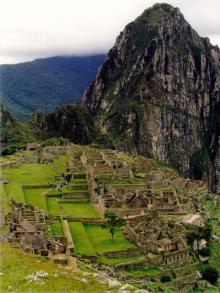


Peru: South America’s economic tiger
China Trader

Peru: South America’s economic tiger
Many people associate Peru with historic sites like Machu Picchu and the Nazca Lines, but few realise that the 30 million-strong country is among South America’s fastest growing economies. Growing confidently with trade liberalisation and retail modernisation over recent years, Peru is worth more attention from those who are looking for emerging markets outside the eye-catching BRIC and VISTA countries, especially after the Peru-China Free Trade Agreement (FTA) took effect in March 2010.
The envy of many others
Peru – home to the ancient Inca culture – has once again become one of South America’s “tiger economies”. Thanks to a series of successful economic reforms during the 1990s (after experiencing inflation of some 7,600% in 1990), Peru ended the past decade flying high, recording an average annual growth of 5.7% and positive growth even in 2001 and 2009 when the global economy was in crisis.
Last year, when many of the world’s developed economies were struggling with persistent unemployment, high external debt and worsening fiscal deficits, the Peruvian economy showed scorching growth of 8.8%, making it the third-fastest growing country in the region, behind only Paraguay (15.3%) and Argentina (9.2%).
While the country’s current per-capita GDP of US$5,200 is not particularly striking, the actual income level, and therefore the purchasing power in Peru, is considerably higher, given its sizeable “informal” economy which is estimated to represent some 38% of GDP and more than half total employment1.
DP growth rate (%)
Source: Central Reserve Bank of Peru (BCRP)
Thanks largely to persistently high commodity prices and skyrocketing international food prices that boosted the country’s mining and agribusiness sectors, Peru, with a projected growth of 7.5%, is expected to be the fastest growing economy in Latin America for 2011.
Burgeoning economy, burgeoning demand for consumer imports
The continued economic growth has not only piqued the interest of many who are focused on emerging markets such as BRIC and VISTA, but led to sustained consumer demand in Peru. Higher employment and wages, plus trade liberalisation, have generated rapid growth in demand for consumer goods and a subsequent increase of imports.
After years of want, Peruvians saw economic development and trade liberalisation providing them with a wide variety of products from around the world. Echoing these developments, Peru’s imports of consumer goods soared 236% over the past decade to 2010, equivalent to a compound annual growth rate of 14%.
Peru’s imports of consumer goods
Source: BCRP
Hong Kong’s exports gain despite global economic headwinds
Against this robust economic picture, Hong Kong’s exports to Peru have been growing steadily over recent years, witnessing a jump of more than 70% between 2006 and 2010. Remarkably, the figure saw an 18% growth in 2009, when the global recession caused Hong Kong’s overall exports to Latin America to plummet more than 29%.
Hong Kong’s total exports of selected products to Peru
(US$ million)
2008
2009
2010
H1 2011
Value
% Growth
Value
% Growth
Value
% Growth
Value
% Growth
Total exports
116
-0.4
137
+18.3
143
+3.9
88
+46.5
Electronics^
54
-6.2
83
+52.8
79
-4.3
49
+40.1
Telecom equipment
12
-49.8
43
+269.9
43
**
30
+89.5
AV equipment
24
+10.2
24
+1.0
15
-37.4
7
-17.0
IT equipment
15
+37.4
13
-12.3
17
+24.0
10
+14.3
Fashion products
23
+5.2
21
-8.3
24
+14.0
18
+88.7
Clothing
12
-2.5
11
-5.1
13
+16.6
9
+65.1
Footwear
8
+38.1
5
-31.4
8
+51.9
6
+111.1
Travel goods and handbags
3
-16.2
4
+32.6
3
-36.6
2
+151.5
Gifts and premiums*
15
+10.7
14
-4.3
15
+6.3
9
+53.3
Toys and games
7
+2.8
6
-9.4
5
-21.3
3
+109.0
^ Includes finished electronic products and parts and components of electronic products
* Includes items covered in other categories














